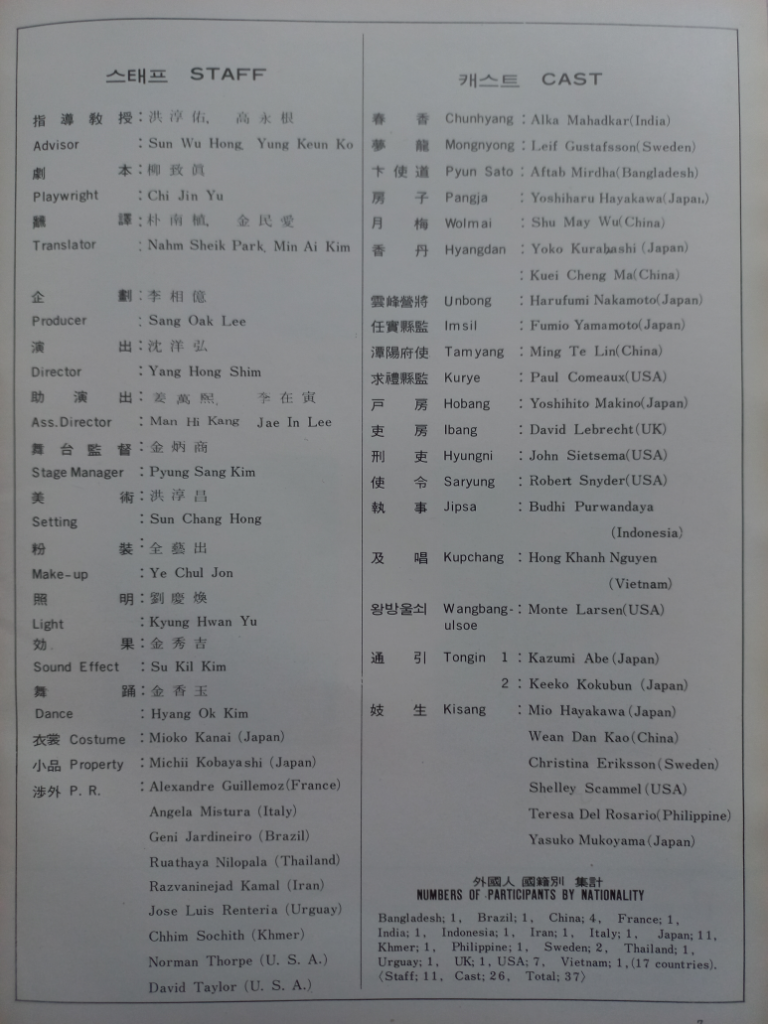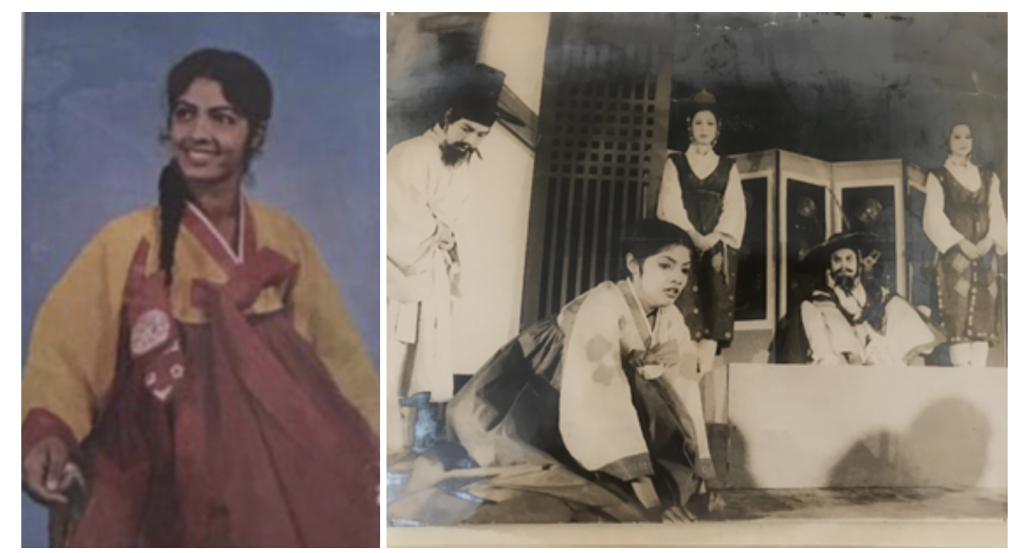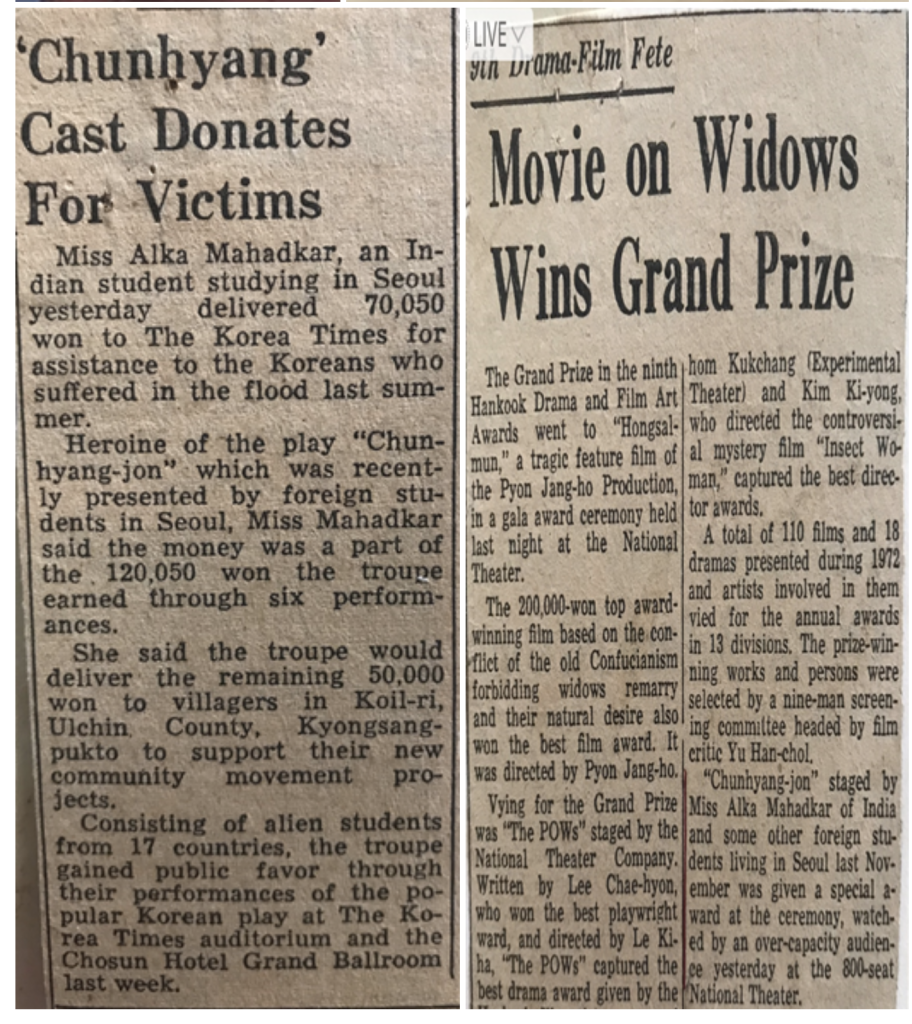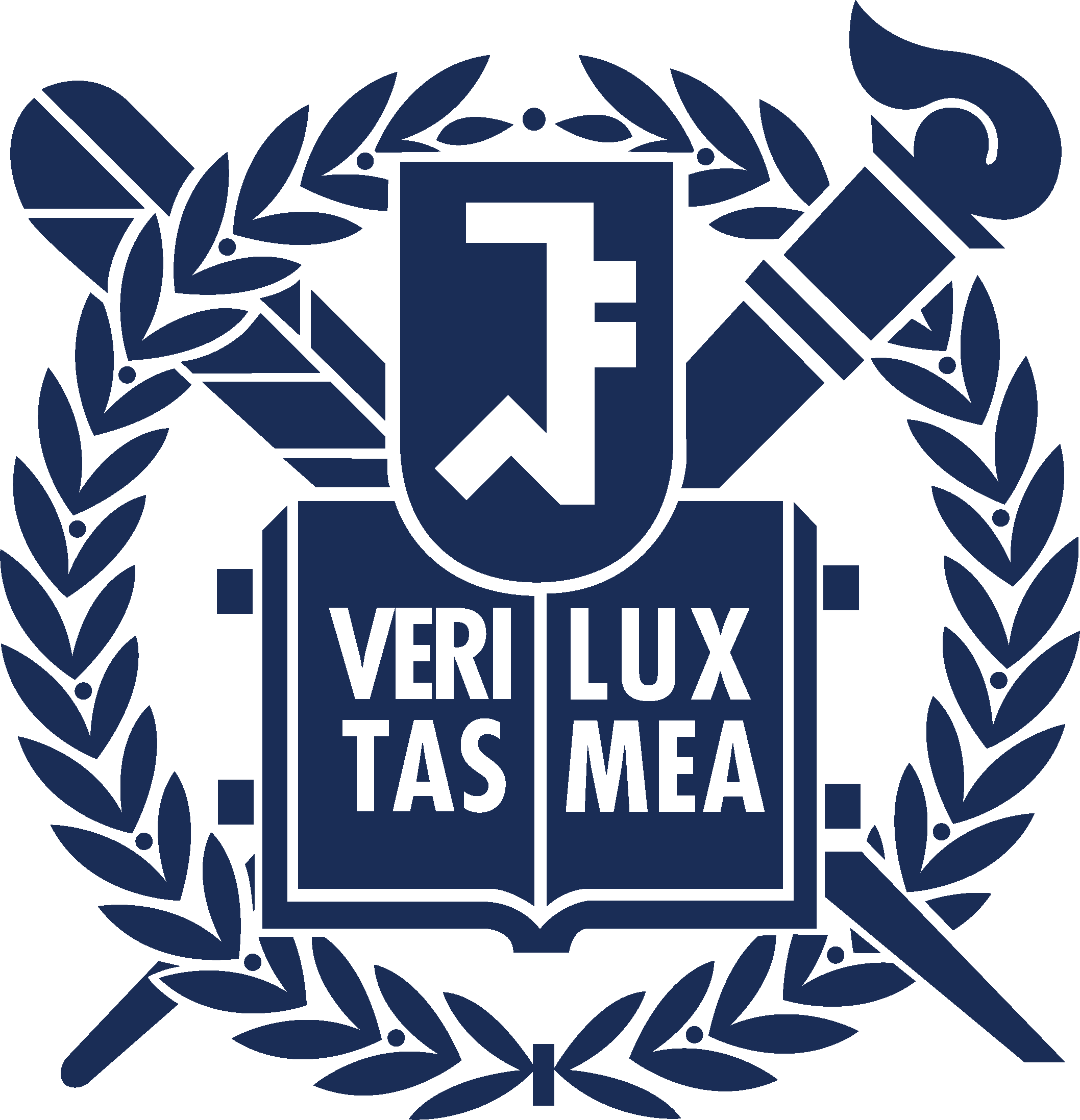자료실
Alka's story in Korea - 2 수재의연금-새마을 운동기금 모금을 위한 17개 외국인의 최초의 한국어 연극
Alka (Mahadkar 미혼명) Gupta 는 1972년 3월 코리아 헤랄드 웅변대회에서 한국어 공부 석 달만에 대통령상을 받더니, 그 해 여름 한국에서 수재 지역이 많아지자 의연금을 만들기도 할 겸 한국어로 외국학생들만의 연극을 해보자는 맹랑한 아이디어를 역시 만만한 조교 겸 강사인 내게 제안했다. 불야불야 해 보지도 않던 제작자의 역할로 나서 우선 한국일보에 기자로 있던 친구에게 이런 갸륵한 뜻을 알려 3면 사회관계 톱 뉴스로 나갔고 정부의 3개 부처와 서울대 및 유네스코, 라이온스 클럽, 호남정유 등 많은 회사의 지원을 순조롭게 받게 되었다. 워낙 초유의 기획이고 선의에서 시작한 일이므로 대단한 호응을 얻던 차에 조선호텔도 볼룸에 가설 무대를 설치해 주기로 제안해 왔다. 1972년 12월 11,12일은 한국일보 소극장에서, 14일은 조선호텔에서 성황리에 공연을 하였다.
내가 청년기에 겪은 일 중에 사회적으로 이런 의미있는 반응을 얻은 경험은 전무후무한 것이었다. 심지어 청와대까지 소문이 들어가 박근혜, 근영 자매도 학생 때 참관을 왔던 것이며, 박대통령은 후일 인도 방문시 특별히 알카를 재상봉할 수 있도록 인도 측에 부탁하여 면담하였다 한다. 한국일보에서 연례 행사로 시상하는 연극제에서도 특별상을 수상하였다.






맨왼쪽 이상억(기획), 중앙 노란옷 레이프(이도령), 그 오른쪽 알카(춘향), 앞줄 중앙 한심석 총장, 그 오른쪽 이숭녕 대학원장, 총장 왼쪽 박근혜(초록옷), 맨오른쪽 심양홍(연출)

춘향전 1972. 12. 14 조선호텔 볼룸 공연 제 장면
Alka's story on Chunhyang
As stories poured in of havoc and destruction caused by the recent floods in Korea (Sept. 6, 2022), my mind went racing back in time, to another month of August, another flood situation, and another era. I am talking about the floods that hit Korea in 1972 in a similar way, and far worse.
I was witness to that devastation exactly 50 years ago. Many lives were lost and thousands were rendered homeless. And while Korea tried to cope with the calamity, help started pouring in from different parts of the world. How I remember feeling utterly helpless at not being able to do anything as a foreign student, to assist the Korean flood victims in their hour of need.
At the time, I was doing my Ph.D. field work at SNU. I had been selected by the Ministry of Education of the Government of India, for a Ministry of Foreign Affairs, Government of Korea fellowship, to do my Ph.D. field work at SNU. My thesis was on “India and UN Peace-Keeping Activities : Korea, a case study 1947-1953”.
I felt strongly that we, the community of foreign students studying in Korea should somehow do our part too in the international efforts to help the Korean flood victims in whatever way possible.
Well, after days of mulling and restlessness, I came up with an idea. And what unfolded thereafter exactly 50 years ago is as fresh in my mind today as the morning dew. Events unfolded in quick succession and before I knew it, I had, with the help of my Korean language teacher, Prof. Lee Sang-Oak of SNU, scripted a piece in the annals of the history of foreign students in the Republic of Korea. The idea that I came up with and the events that followed went thus:
I thought we the foreign students studying in Korea should come together and stage a Korean play in the Korean language, and whatever funds we would raise from the sale of the tickets for this play, we would donate to the flood victims.
Thus thrilled at my own idea and excited that we the foreign students could also contribute in whatever measure possible to the flood victims, I enthusiastically approached Prof. Lee Sang-Oak and laid bare my thoughts. He couldn’t believe I was serious! He was both amused and baffled at my confidence. He tried to reason with me that performing a Korean play in the Korean language was no child’s play and that foreign students would not be able to pull off such a feat.
However, I refused to give up. Well, he had been privy to my will power and determination earlier when within 2 1/2 months of learning Korean I had persuaded him to let me enter the esteemed Korea Herald Foreign Language Contest For Foreigners, and had actually stood first and had won the President of Korea’s Trophy. Perhaps recognising that grit and Can Do spirit in me, he finally gave in. Getting Prof. Lee Sang-Oak on board meant half the battle won. But of course there was a lot more convincing to be done. Together, my prof. and I went to the then Dean of the Graduate School, SNU, Dr. Lee Sung-nyoung, and spelt out our plan to him. It was not easy to convince him. However, eventually he agreed. Nevertheless our battle was not over yet. Prof. Lee and I had still to get the go-ahead from the Ministry of Foreign Affairs. Once we got the green signal from them, we feverishly embarked upon the challenging journey we had ahead of us. Prof. Lee Sang-Oak was of course my anchor. Without him my grand vision of this most challenging feat would never have seen the light of day. His contribution to the success of the event was no doubt, pivotal. To begin with, he single-handedly managed to raise funds both from the Ministry of Education and the Ministry of Culture and Information - an accomplishment which helped support the production cost of staging the drama, and also enabled us to donate more money to the flood victims.
There were so many other things he had to do as well. On top of the list was choosing the right play. Prof. Lee zeroed in on the classic, Chunhyang Jon - the most popular Korean play. Then he set out to look for an appropriate Director who could handle foreign students. We were fortunate that he successfully roped in the very able director, Mr. Shim Yanghong, his former classmate from SNU. Prof. Lee Sang-Oak then proceeded to write an easier and abridged version of the play. After his completion of this major task, the two of us set about recruiting foreign students for the project. We needed a big cast for the play. And once we assembled a substantial pool of foreign students, Prof. Lee and Mr. Shim went about the important job of selecting the cast.
There were six main characters and a host of junior characters. The lead character was of course Chunhyang, the daughter of a courtesan with whom falls in love the son of a yangban (nobleman), Yi Doryong (Mongryong)
While I was selected to play the prestigious role of Chunhyang, it was not easy to find a foreign male student fluent enough in Korean to do justice to the role of Lee Doryong. Exasperated, the director finally selected a 6’3” tall Swedish student. He could speak in Korean no doubt but this former seaman couldn’t act at all. The director had a tough time training him. And despite all his efforts, our 6’3” tall white Yi Doryong appeared pretty comic to say the least!
The next important role was that of Byun Sato, the mean and evil provincial governor. And this role went to a Bangladeshi, Aftab Mirda. Then came the other three important characters - Wolmai, Chunhyang’s mother; Bangja - Yi Doryong’s attendant; and Chunhyang’s attendant Hyangdan. While Wolmai’s role was enacted by a Taiwanese student, Shu May Wu, both Bangja and Hyangdan’s characters were performed by two Japanese students - Yoshiharu Hayakawa, and Yoko Kurahashi respectively.
The rest of the cast comprised of students from the US, UK, Vietnam, The Philippines, and Indonesia. In addition, the volunteer staff was recruited from several other countries such as France, Italy, Iran, Brazil, Urguay, Thailand, and Khmer. There were 26 foreign students in the cast , and 11 foreign students in the crew -- a total of 37 students participated from 17 countries. This was the first time in Korea’s history that so many foreign students from so many countries had come together for such an event. Yes we had created history!
Anyways, to take the story forward…, once the cast was selected, the practices began in full swing.
Although the purpose behind the play was serious and sorrowful - raising money for the flood victims - the rehearsals after our respective classes every day, were fun-filled, full of comic situations, weird Korean accents, funny expressions…bewildered expressions…and confused expressions…all kinds of expressions except the right expressions! Of course balancing our academic load and rehearsals was no doubt not easy, and learning our Korean lines, understanding their meaning, and memorising them was even more difficult. Needless to say it was an uphill task for Mr. Shim as well trying to get a reasonably decent Korean performance out of a bunch of amateur foreign students from different parts of the world.
Well, as we proceeded with our daily practices, Prof. Lee Sang-Oak got busy arranging the venues for the performance, organising the printing of the tickets and brochures, and seeing to the advertising of the event. Also, together with the director he had to arrange for the costumes and props, and get the stage, lighting and acoustics set up, and handle all the other related nitty-gritty. It was all a Herculean task - especially due to the limited funds available. Prof Lee Sang-Oak was truly the backbone of this entire venture. I had dared to dream a grand dream, but without him this dream would not have materialised. Seonsengnim, a big Thank You to you…. always.
Herculean task no doubt it all was but everything just kept falling in place due to the concerted efforts of all involved and the good will and generosity of a lot of good hearted people, institutions and organisations.
Anyhow, coming back to our rehearsals, finally our everyday practices gradually moulded us and gave us confidence to perform.
And since this was the first time in the history of the Republic of Korea that such a venture was undertaken by the community of resident foreign students, we decided to invite the late President Park Chung Hee and the late First Lady, Yuk Young-soo, to the performance. They didn’t come themselves but both their daughters, Geun-hye and Geun-ryeong represented them at the show. Little did anyone at the time know that Geun-hye would one day walk in the shoes of her illustrious father and head the nation as the President of the Republic of Korea.
Engrossed in memorising our Korean lines, the daily rehearsals, and our studies, we almost lost track of time, and before we knew it, D-Day was upon us and suddenly we all found ourselves on the stage, facing the elite Korean crowd who was waiting with bated breath, curios to see foreign students perform in the Korean language their favourite Korean play -- the classic -- Chunhyang Jon.
Our play turned out to be totally entertaining, full of good moments and some good acting and also some mirth. It was a huge success, despite some comic situations, some strange Korean accents and even stranger non-Korean looking characters. Perhaps all these nonconforming attributes added to its success. The bottom line was that the audience enjoyed watching the play and we enjoyed performing the play.
We staged four performances, at two venues -- the Grand Ballroom of the Chosun Hotel, and the auditorium of Hankuk Ilbo. The latter is a media company which also operates Korea Times. Luckily for us, Prof. Lee had a journalist friend working there, and through him he arranged for a top article to be published on our benevolent venture, in the Hangkuk Ilbo. This move helped to not only give us publicity but it was also instrumental in getting us the Chosen hotel - the most prestigious hotel of the time, to give us for free, it’s state-of-the-art stage in its Grand Ball Room, for our epoch-making performance.
The grand event soon became the talk of the town which prompted KBS to air the show on TV, and it became so popular that KBS continued to air it intermittently for many years.
The success of the play also prompted Korea Times to accord a Special Award to us on the occasion of the 9th Hankook Drama-Film Fete watched by an “over-capacity audience at the National Theatre”.
Accolades aside, I was just so happy that my desire to contribute to the Korean flood victims of 1972 had at last been fulfilled. And with that came to an end the exciting saga of our combined efforts as a body of foreign students, to stand together in their hour of need with the people of the land where we were studying, and thus scripting perhaps the first chapter of the history of the foreign students’ activities in the Republic of Korea, which was written exactly 50 years ago.
PS:
I am sharing some photographs and press clippings of the occasion. And I am also sharing another of my precious possessions -- a letter from President Park Chung Hee himself, in which he mentioned the play and my role as Chunyang.


